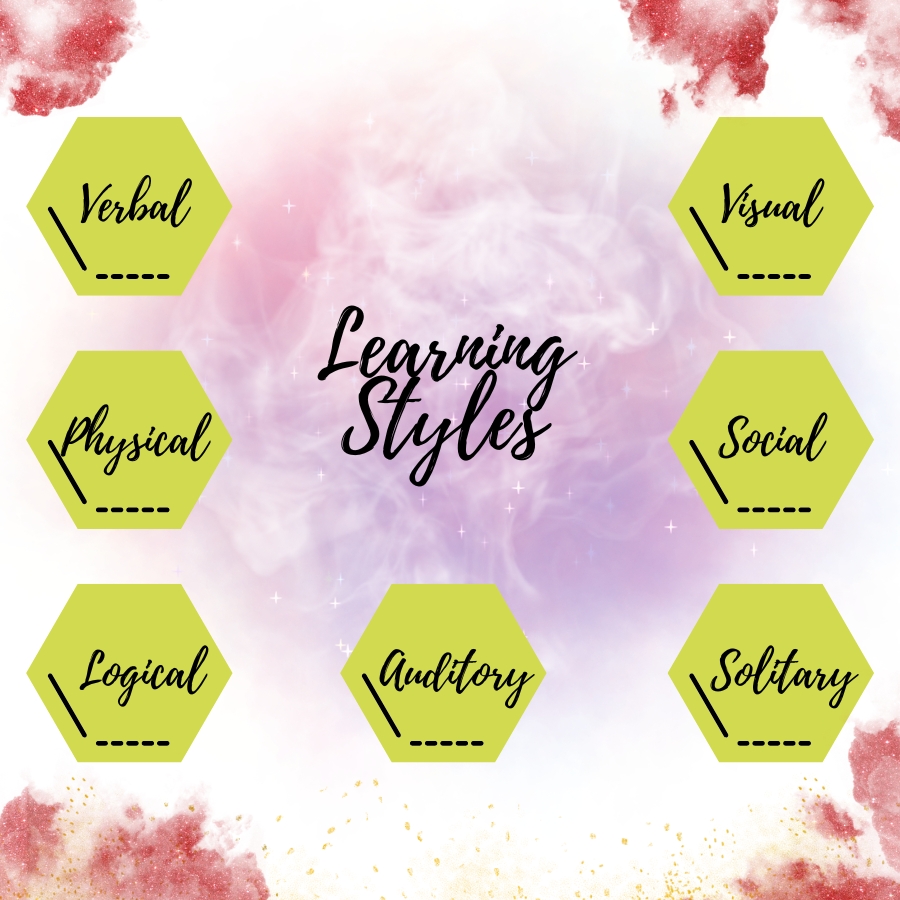WHICH LEARNING STYLE SUITS YOU?

Not only do we all have our own preferred styles of learning, but it can change depending on what we are learning. Feel free to play around with different methods to find what suits you best.
From our experiences as children, most people assume that we learn because we watch someone stand at the front of a classroom and talk at us for hour upon tedious hour. For some, this can be a useful way to learn, especially for those of us who can listen attentively and leave with a newfound knowledge of a topic. For others, it can feel like white noise and a mind–numbing example of how not to learn. There is a wide variety of methods for people to learn new information and skills, and recent research is paving the way to explore these methods for individualised learning.
For this question, ask yourself about your preferred method of learning something new. For example, are you a visual learner? Meaning that images, videos, and diagrams integrate themselves into your memory better than a person explaining something or when you read from a book. Maybe you learn very quickly when you are actively doing something. This style may be suited for things like dancing or sports. Do you require visualisation and coaching before putting everything into practice to hit the ground running? This may require a slower and more methodical learning style, so you are absolutely clear on the task and expected outcomes before starting. There are many ways that you can learn something new, and taking a little time to understand what works best for you will pay off in the long–term, because whatever your goals are for your future, there will always be new and unfamiliar paths that you take. Like anything new, there will be a learning curve, and understanding how to get the best out of your time when learning them will improve your productivity in the long term.
Let’s shed a little more light on the different learning styles that you may want to have a think about. A verbal learner will respond well when ideas and concepts are explained to them, like in a classroom lecture or podcast, but also by reviewing written texts. The use of language will convey ideas more effectively compared to other methods.
Physical learning is one that occurs by actually doing something. A person who favours this type of learning might learn faster by performing the action themselves and figuring it out by trial and error.
Logical learning is typically associated with mathematical problems that need to be understood. The control and order of numbers and routines will appeal to the conventional logical learner.
Auditory learning is done by listening to information so it can be processed more clearly. This can range from audiobooks or podcasts to the typical musical notes of a song that a musician can understand and replicate often without the need for any written material.
Visual learners respond well to images, graphs, charts, and general illustrations that grab their attention to explain concepts. Mind maps are a common method that visual learners use, where all of the ideas and concepts are sketched out in front of them, making it easier to integrate the information and connected themes.
Social learning occurs best when information and ideas are communicated clearly between groups of people. This a common activity within classrooms or workshops where people are placed into groups who need to work together to solve a problem. Real estate, sales, and project management are professions that often attract social learners because teamwork and communication are natural methods for a person to learn more about their role and improve their abilities.
Solitary learners are more adept at taking their own time to work through any material that needs to be understood, because it allows them to find explanations themselves with few distractions. This is often done by reading through a manual or textbook, or simply working in a quiet space.
Despite the learning styles mentioned,
it is more likely that you will learn by utilising all the different styles depending on the circumstances and information that you want to learn. However, some styles will appeal to you much more than others, and understanding these categories can help facilitate the learning process for you in the future.
These learning styles are probably not going to give you a definitive answer, but what they can do is help you to reframe the ideas you may have about learning something new. They can highlight different ways in which you can approach a new challenge, and help you to look for more interesting ways to learn whatever new thing comes your way.
This is an excerpt from The Quantum Method – the science of productivity (Mike Tranter PhD)